Thanks to the ongoing work of Rewilding Romania and WWF Romania, the free-roaming European bison population in the Southern Carpathians rewilding landscape is thriving. New, multi-partner efforts will take bison recovery to the next level and ensure local communities continue to benefit.
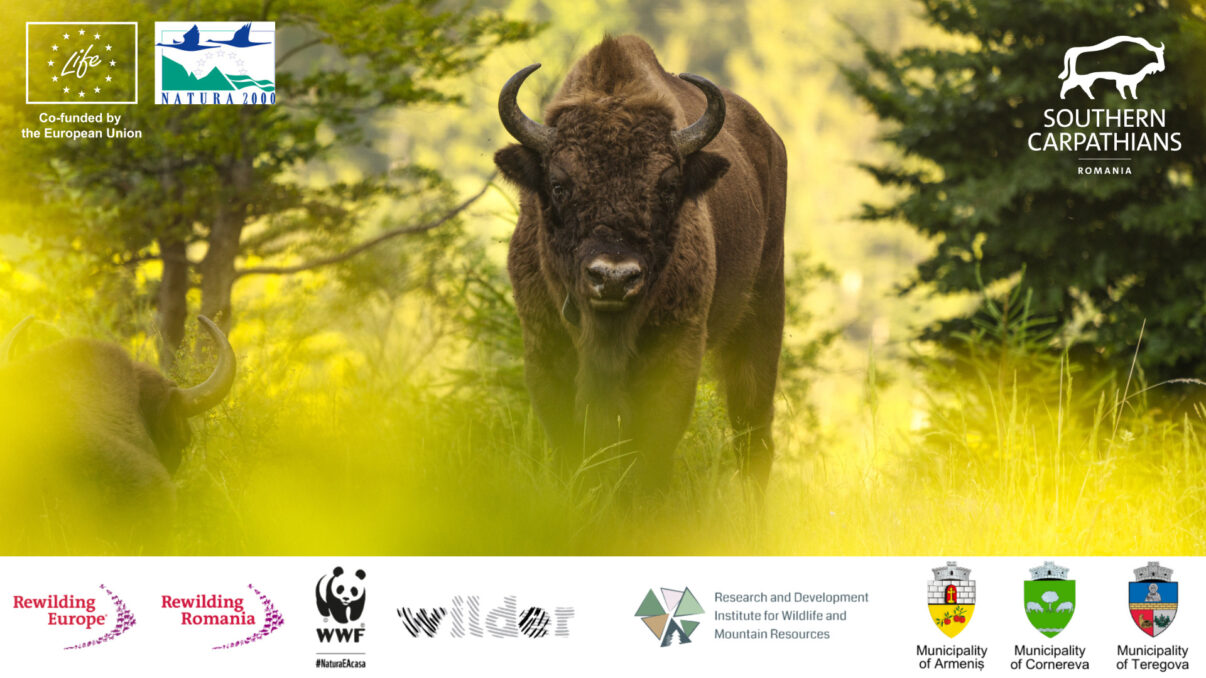
Continued coexistence
Between 2014 and 2023, Rewilding Europe and WWF Romania translocated more than 110 European bison to the Țarcu Mountains – a part of the Southern Carpathians rewilding landscape where no wild bison had roamed free for at least 250 years. Based on a genetic study carried out in 2022, the current population of European bison in the landscape is now estimated at around 180 individuals, which includes the release of eight additional bison and new born calves in 2023. With this free-roaming population thriving and expanding naturally, the focus of bison rewilding efforts is now entering a new phase.
With financial support provided by the EU’s LIFE Programme under a grant named “LIFE with Bison” – and in collaboration with Romania’s Research and Development Institute for Wildlife and Mountain Resources, three Romanian municipalities, and WeWilder, the green economic arm of WWF Romania – Rewilding Romania and WWF Romania will build on the proactive bison herd management and stakeholder engagement undertaken in the Southern Carpathians to date. They will ensure that the growing European bison population and people who live in the landscape can live alongside each other in a balanced and positive way, and that local communities benefit financially from the return of this iconic species, through the area’s burgeoning nature-based economy.
“While the conservation status of the European bison has improved in recent years, there are still many unknowns regarding the ecology of the species,” says Adrian Grancea, a project officer leading the bison rewilding efforts in the Southern Carpathians for WWF Romania. “This new initiative will give Rewilding Romania and WWF Romania the opportunity to further diversify the genetic base of the growing population in the landscape, monitor and learn from the free-roaming individuals it contains, and help local communities in and around the reintroduction area to continue developing in a sustainable way.”
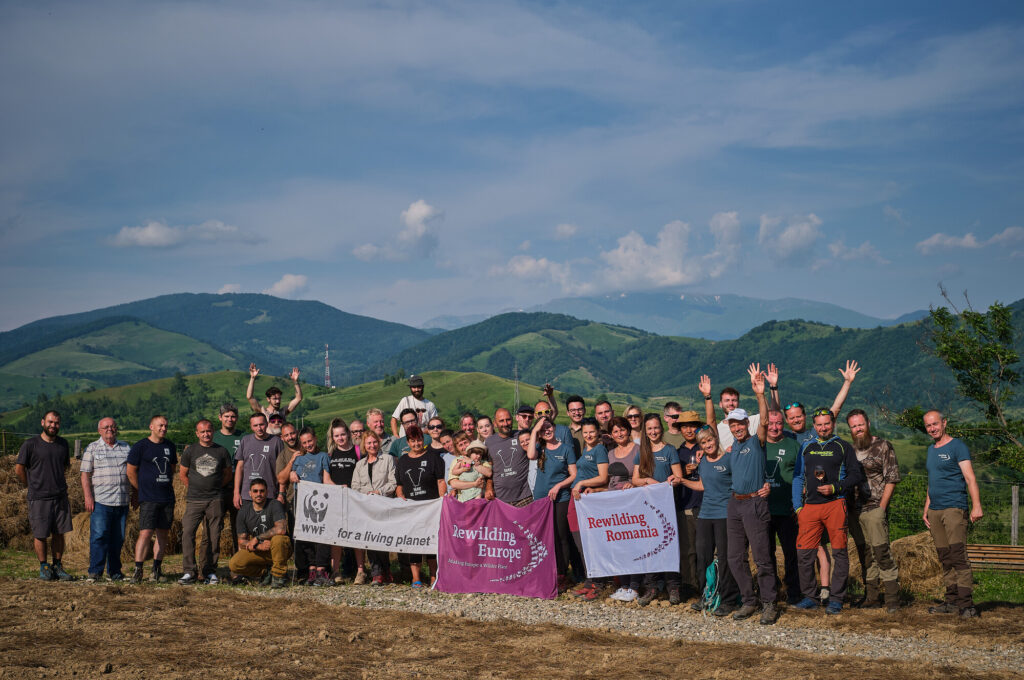
A thriving population
The Rewilding Romania team estimate that more than 20 bison calves were born in the Southern Carpathians in 2022-2023. Representing the highest number of calves born in any year since reintroductions began, this shows the free-roaming herds are flourishing in the landscape. Accounting for births and deaths, it means more than half the total population of bison in the Țarcu Mountains has now been born in the wild.
For a bison population to become genetically viable, it needs to reach 150 mature individuals, which means a total population of around 350 to 400 animals. If the population in the Southern Carpathians continues expanding at a similar rate, it is estimated that it will number between 350 and 450 individuals by 2030, although this is a ballpark figure.
The range of the bison population is also steadily increasing and is now estimated to be around 230 square kilometres – the fastest range expansion of any reintroduced European bison herd. In September, a group of bison made its way south into Domogled National Park, where they were welcomed by the authorities. More recently, the rewilding team have seen one of the males that was translocated in 2023 associate with bison already in the landscape and travel 20 kilometres to the north of the release site, towards Retezat National Park.
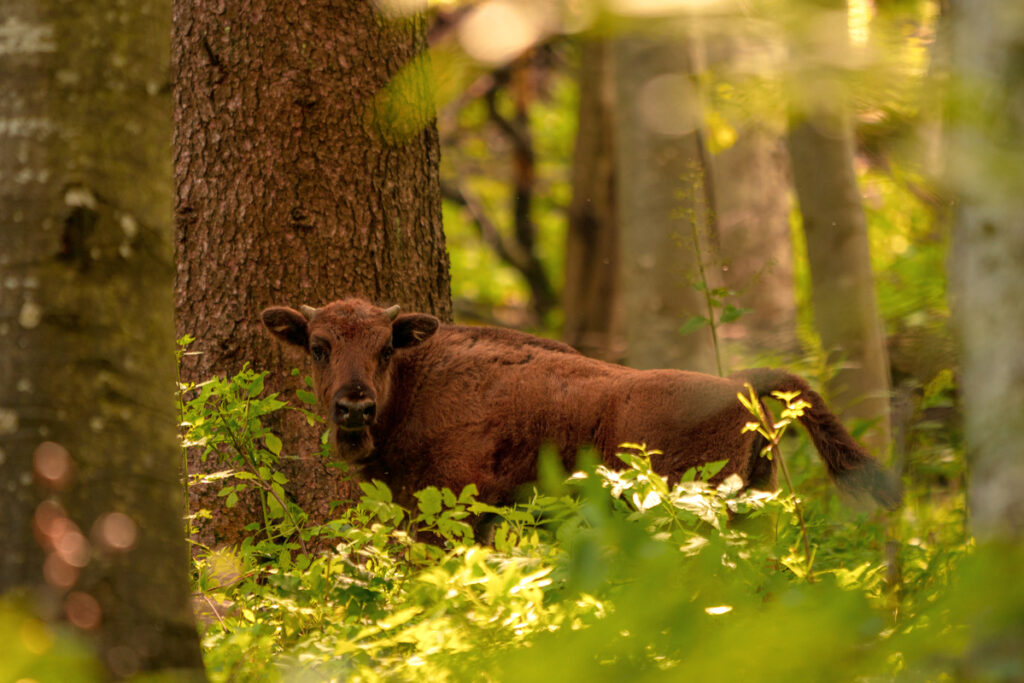
Wide-ranging measures
Moving forwards, Rewilding Romania and WWF Romania will carry out a range of measures to scale up the recovery of the European bison in the Southern Carpathians. The organisations managing three existing bison populations in Romania will work together with the Romanian government on a national strategy and action plan for the recovery of the species. In addition to the bison in the Țarcu Mountains, a population managed by Romania’s national forest administration Romsilva can be found in Vanatori Neamt Nature Park, while a population was reintroduced in 2019 in the Făgăraş Mountains by Foundation Conservation Carpathia. Other populations could be established in the country to build a meta-population across the whole Carpathian mountain chain and beyond. In the Țarcu Mountains, the long-term viability of the existing bison population will be strengthened by increasing its size and genetic diversity, with further translocations of animals expected.
In addition to measures designed to build and maintain positive relations between people and bison – which include community outreach and ranger patrols – Rewilding Romania and WWF Romania will continually monitor the health of the free-roaming herds. This will minimise the risk posed by the potential transmission of disease present in local livestock. To promote human-bison coexistence on a continental scale, the team will also share expertise and experience with other bison rewilding initiatives across Europe, including in the Oder Delta. In 2017, a wild European bison was shot after it crossed the border from Poland into Germany near the town of Lebus, to the south of the delta, highlighting the need for more comprehensive measures to support bison comeback.
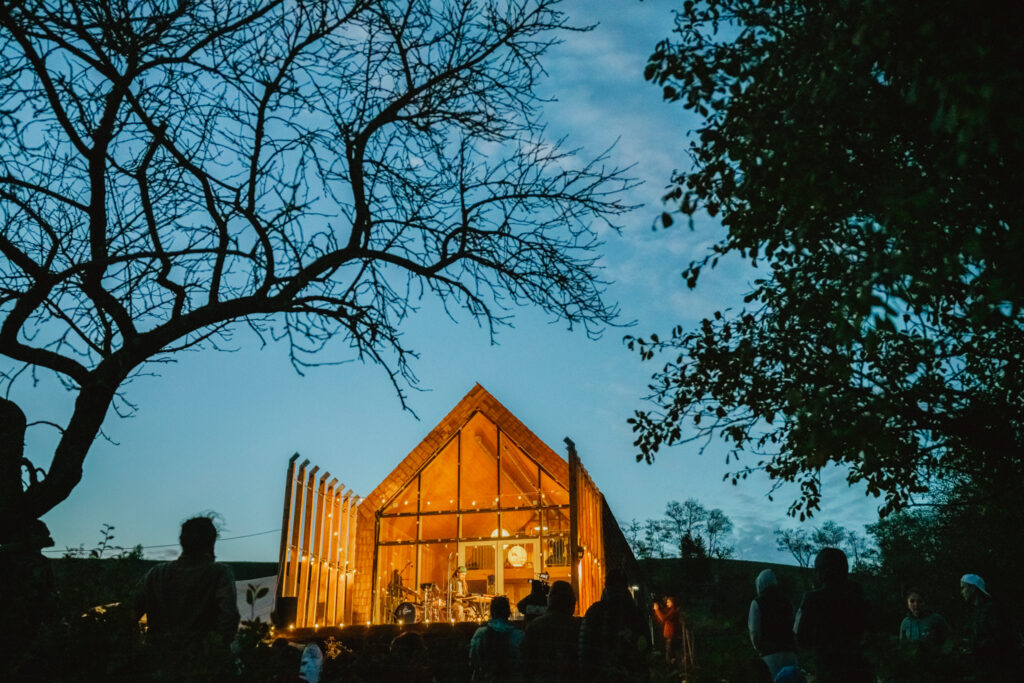
Ongoing challenges
The European bison, Europe’s largest native land mammal, was historically distributed throughout western, central and southeastern Europe. Due to habitat destruction and intense hunting, the species was close to extinction in the 1920s. It is from this low point that the European bison has slowly but surely inched its way back, supported by various breeding programmes and reintroductions, with more than 7000 individuals now roaming free across Europe.
Despite this comeback, the European bison remains very dependent on conservation action and faces serious threats in Romania and beyond. The entire European population is very fragmented and has limited genetic diversity – a consequence of population restoration from only 12 captive individuals. This makes European bison particularly vulnerable to diseases such as blue tongue virus, foot-and-mouth disease, balanoposthitis, bovine tuberculosis, and other respiratory illnesses.
The capacity of the European bison to cause agricultural and forestry-related damage can also generate low levels of acceptance, and has led to calls to limit the growth of some populations. These threats are exacerbated by misaligned policies both at European and national level. In Romania, challenges include confusion over the legal status of the species, which is categorised as both a protected species and a game species – this can also lead to confusion over who takes responsibility for coexistence measures.
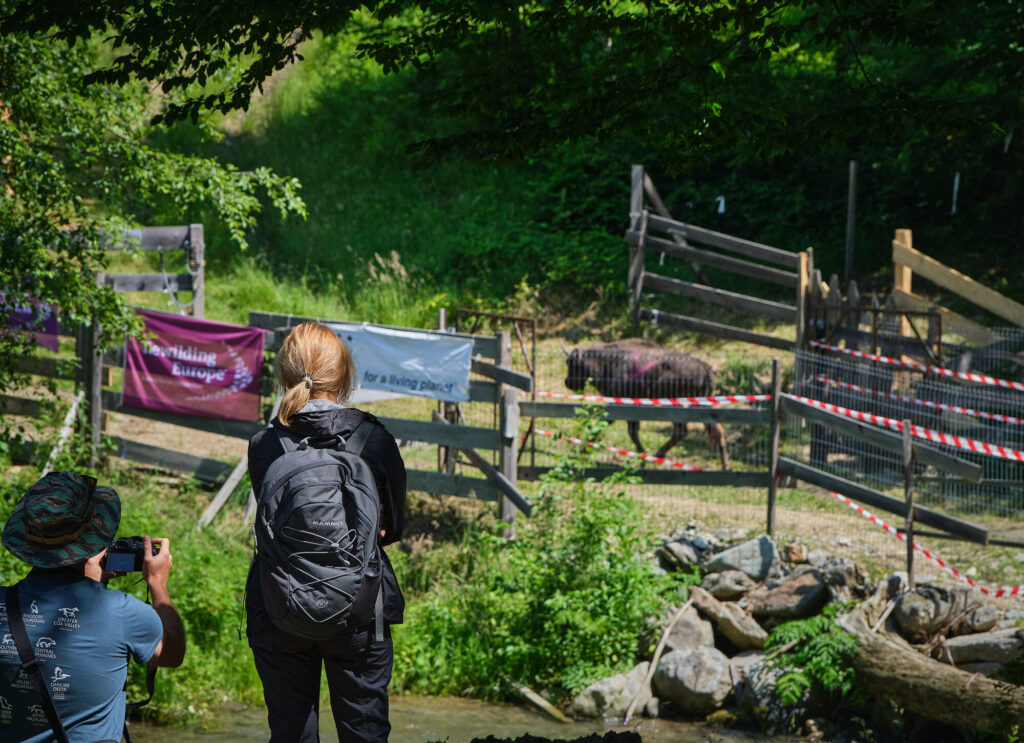
Diverse funding
The budget for Rewilding Romania’s work to support bison comeback in the Southern Carpathians between 2024 and 2028 is 5.24 million euros, with the LIFE Programme contributing 75% through the LIFE with Bison grant. The LIFE Programme is the European Union’s funding instrument for the environment and climate action. Rewilding Europe is providing co-funding, thanks to financial support from Cartier for Nature and Fondation Ensemble.
Funded by:

Coordinating beneficiary:
Partners:

